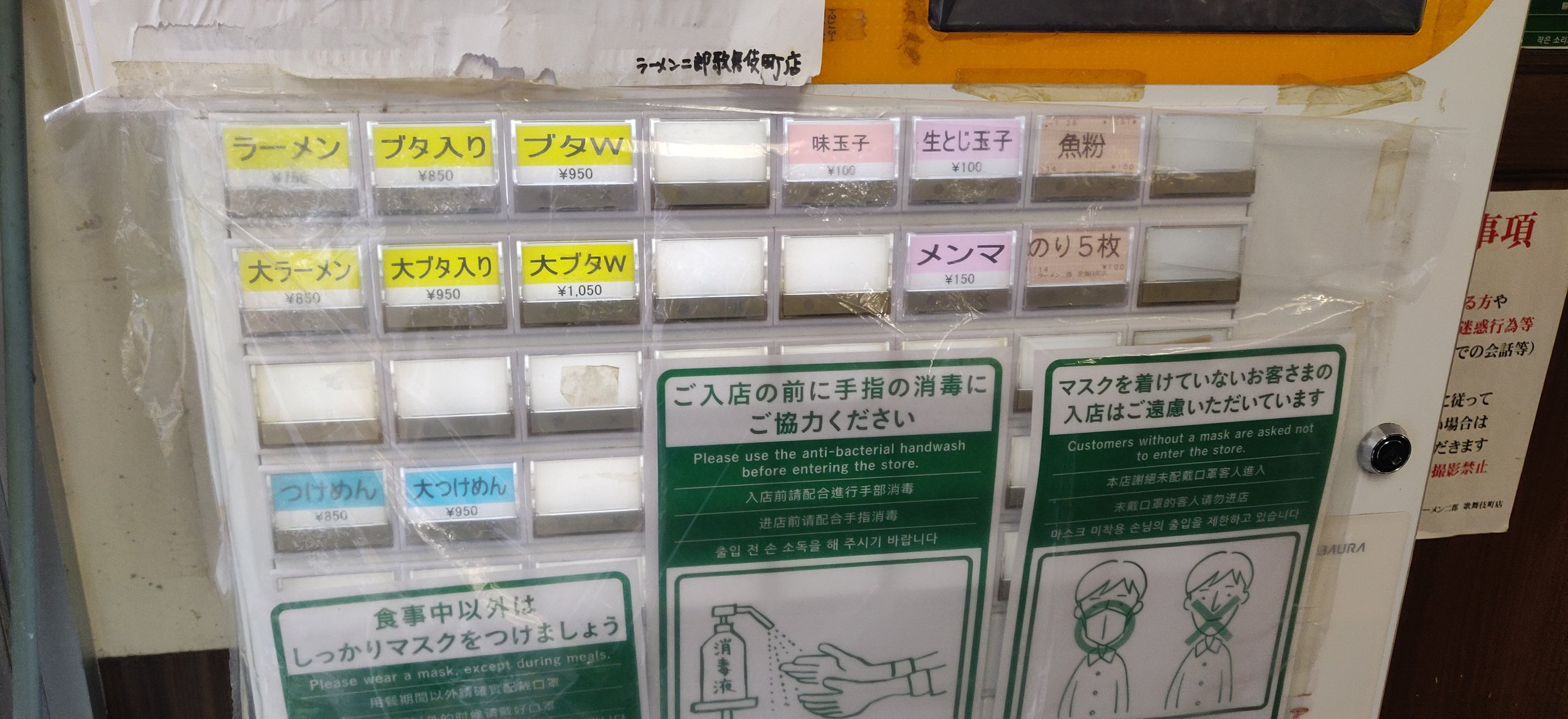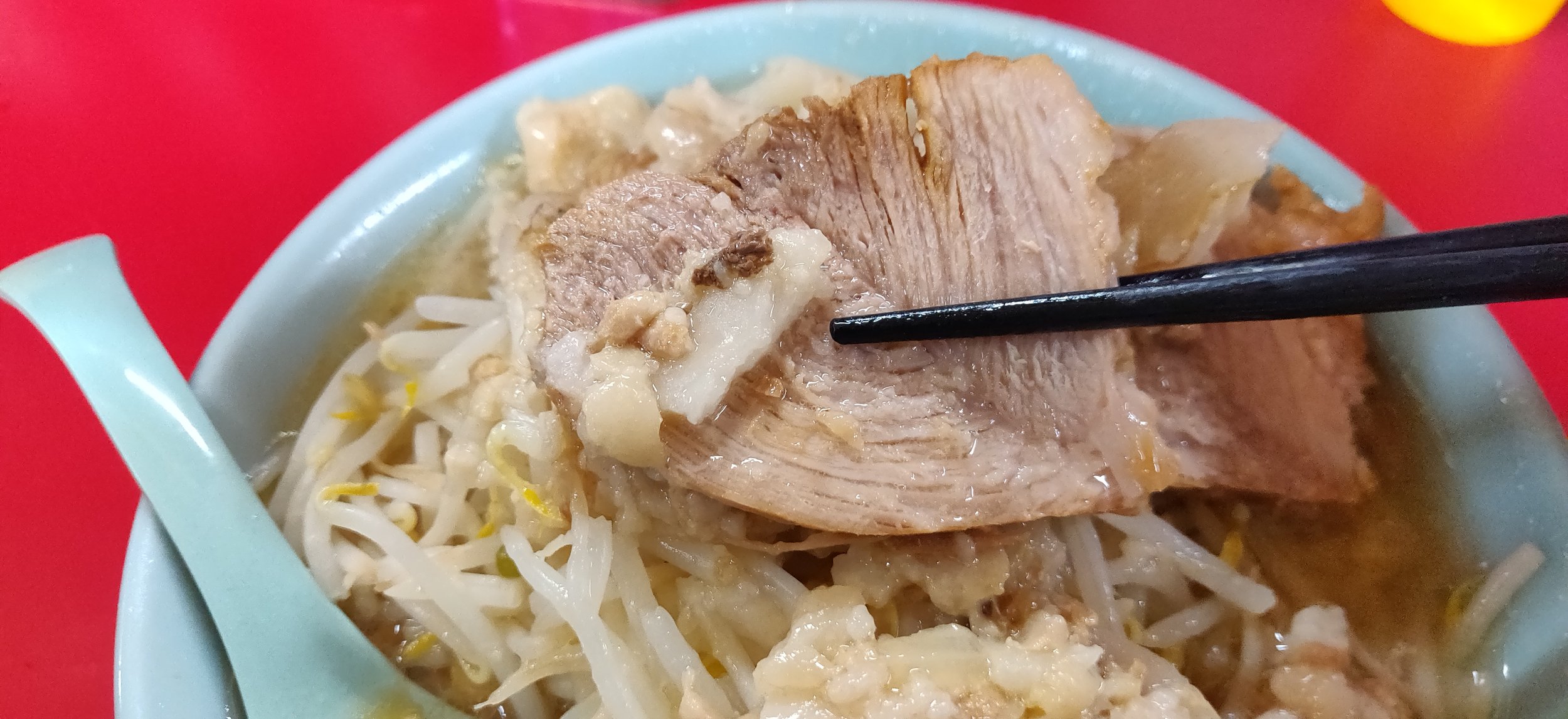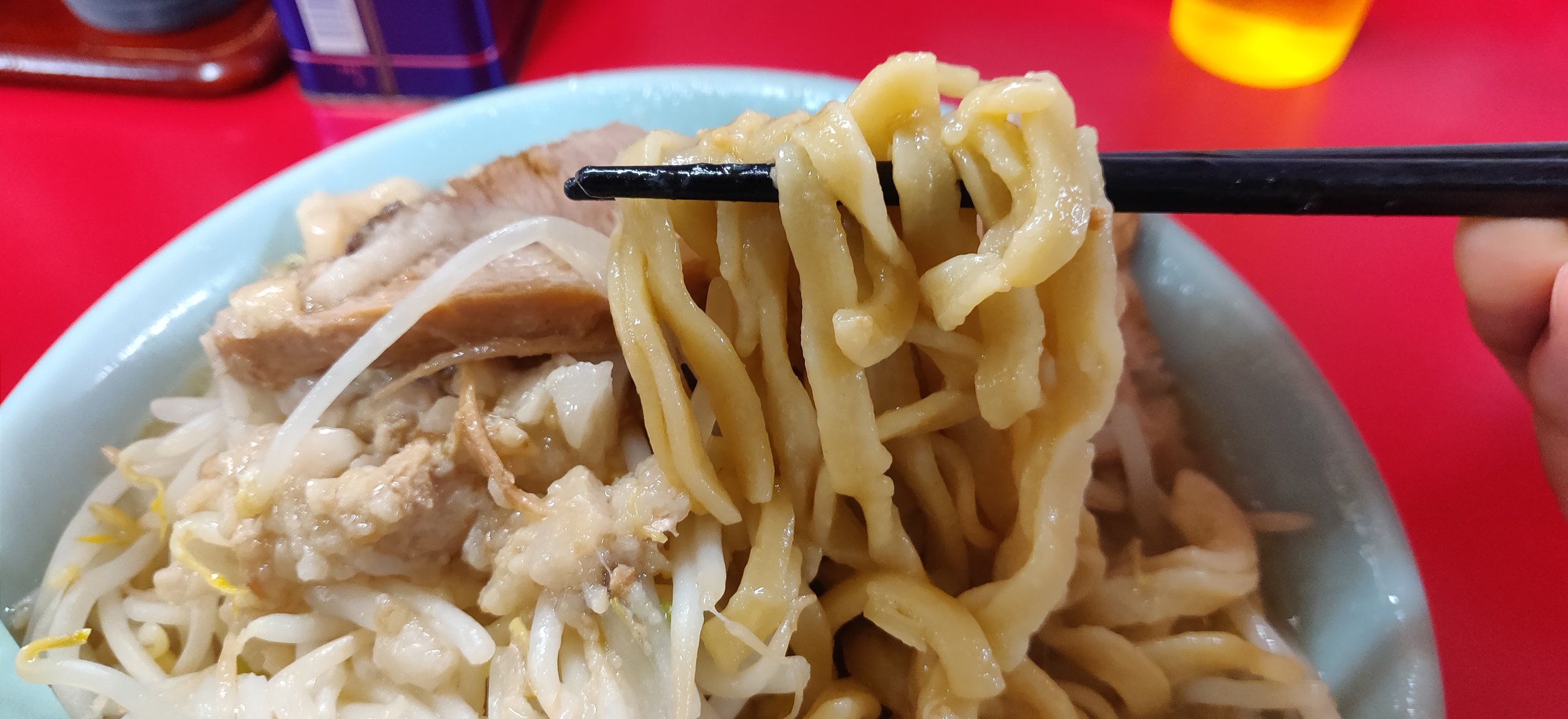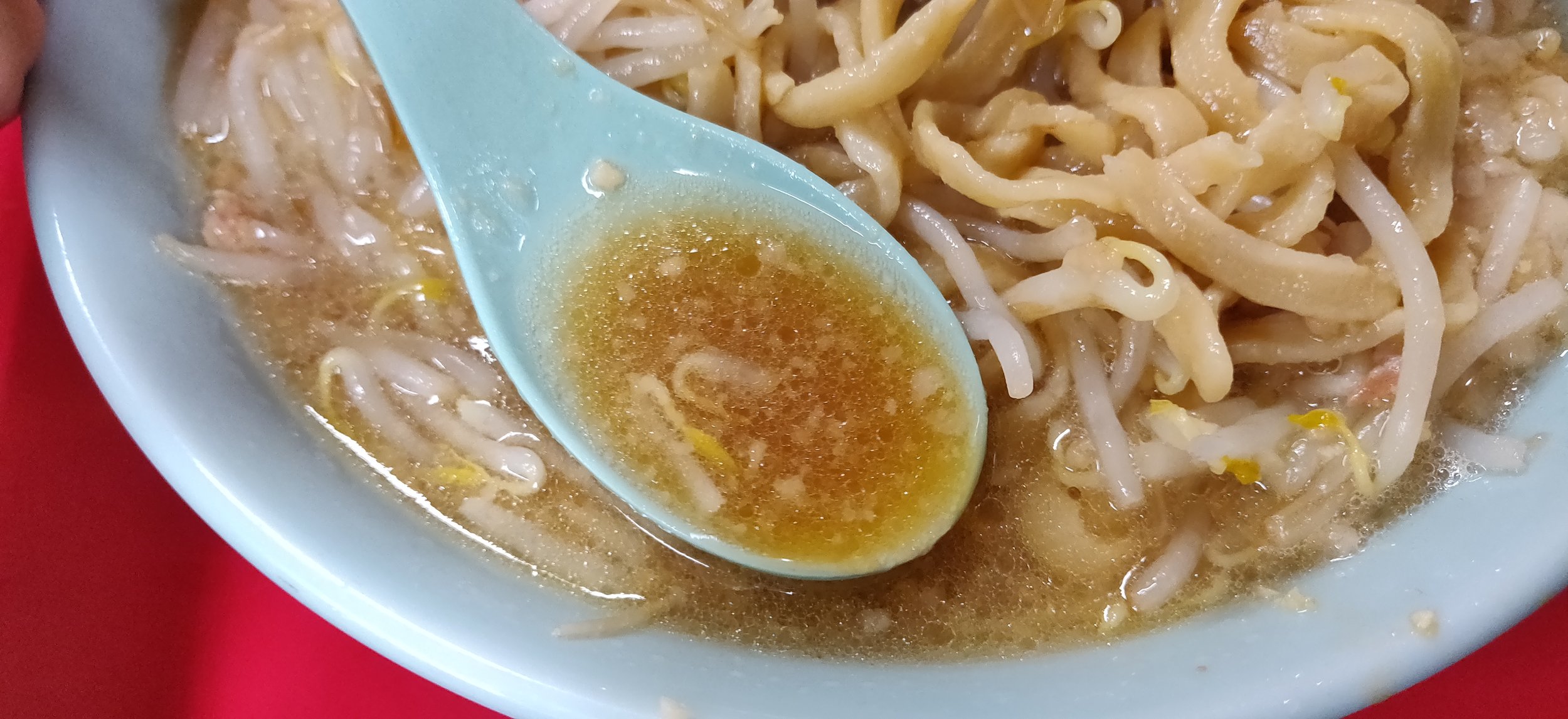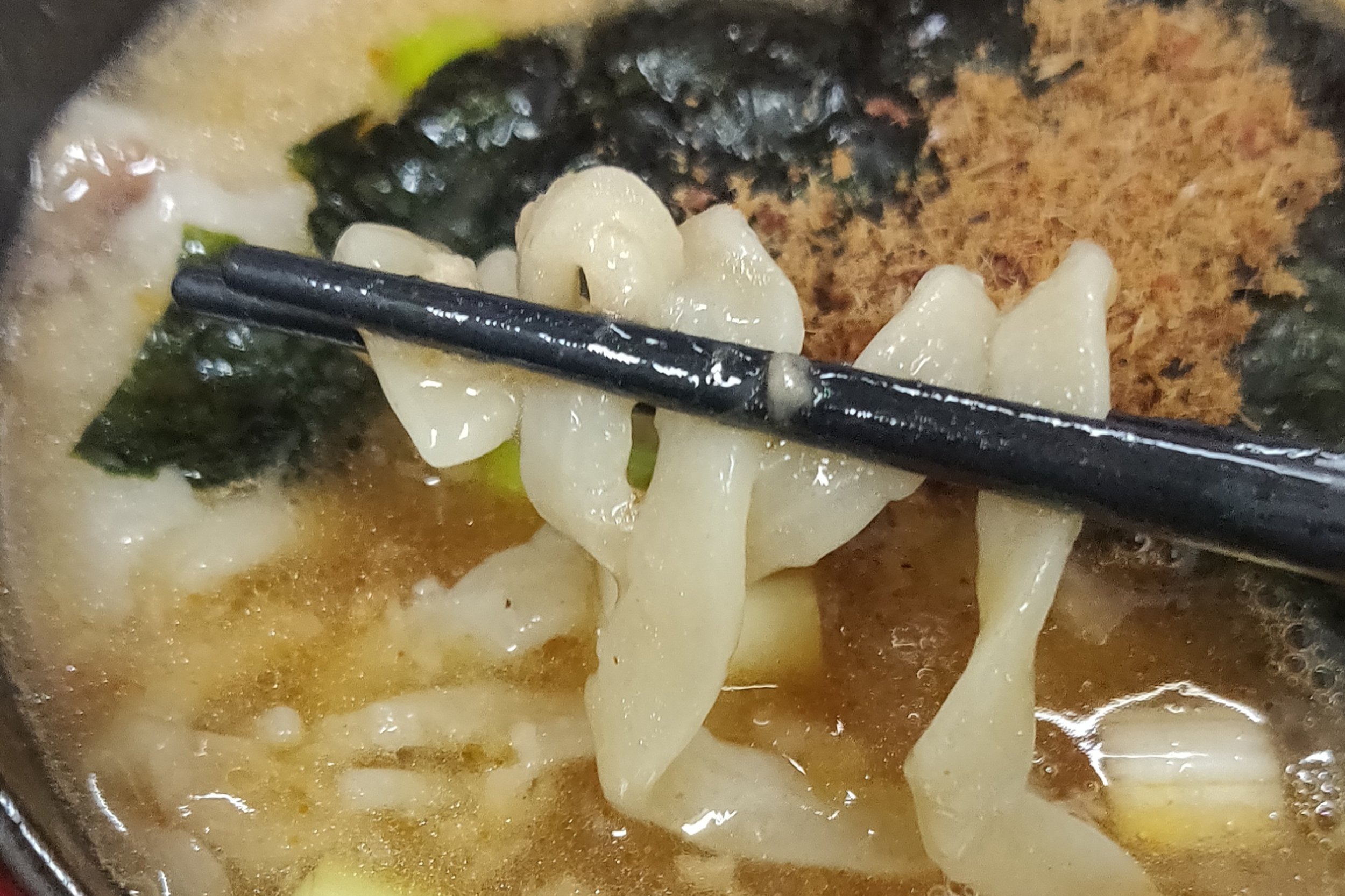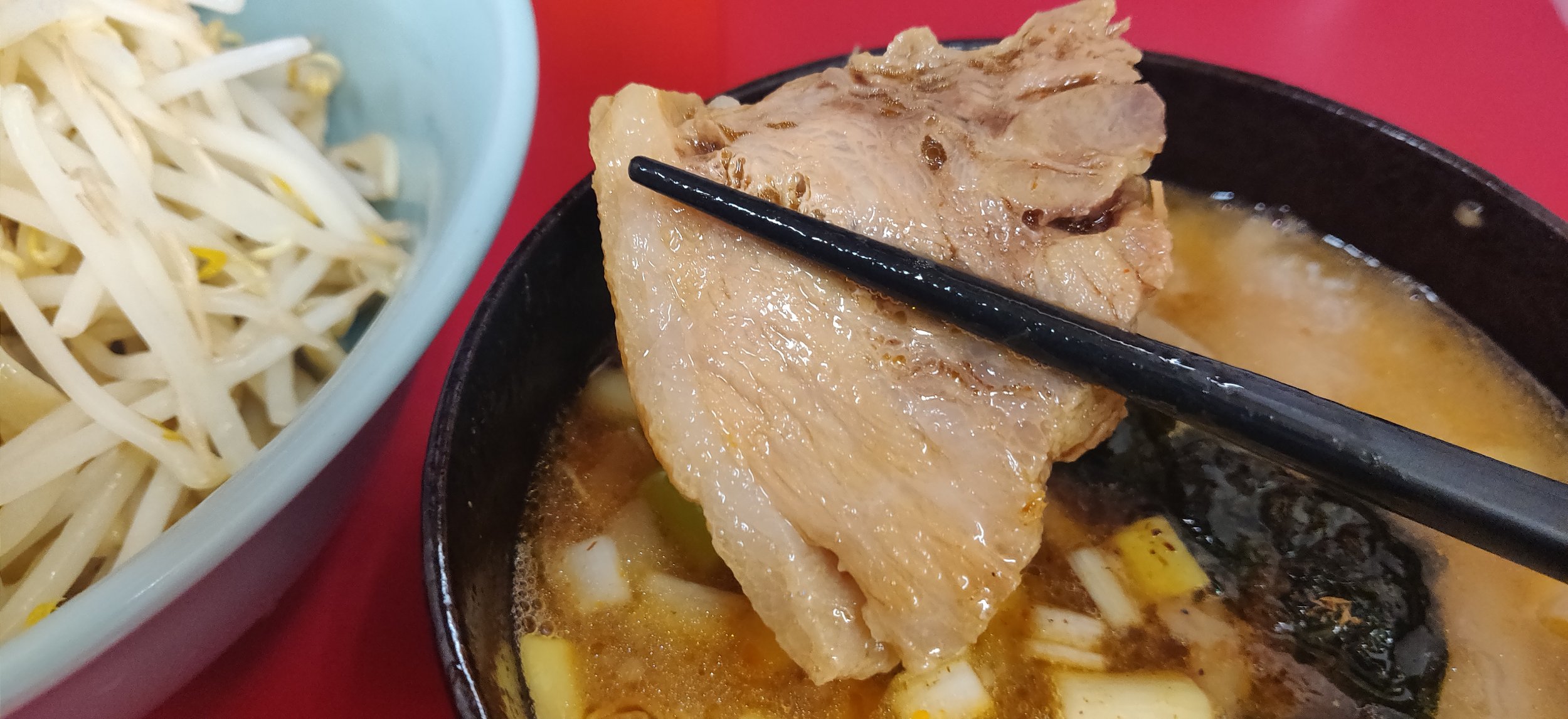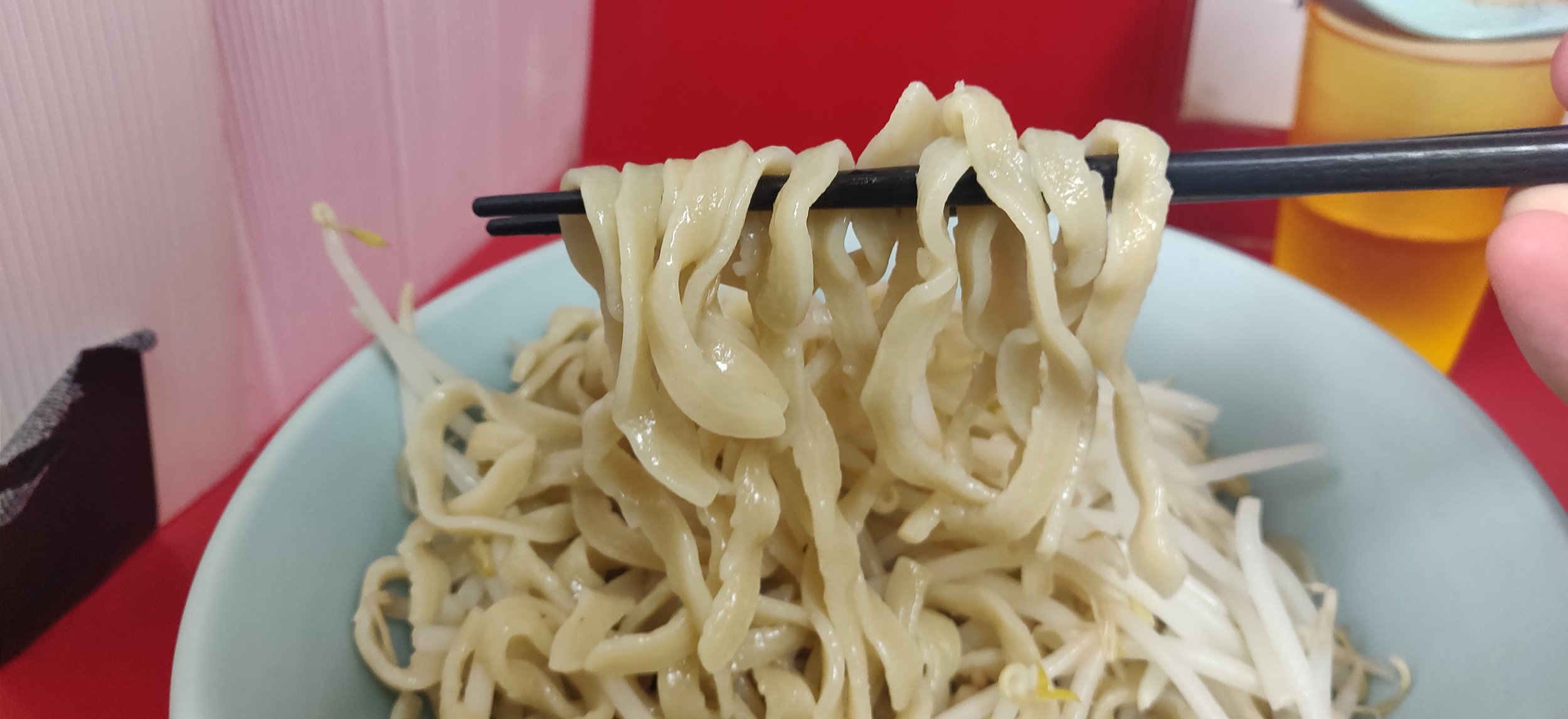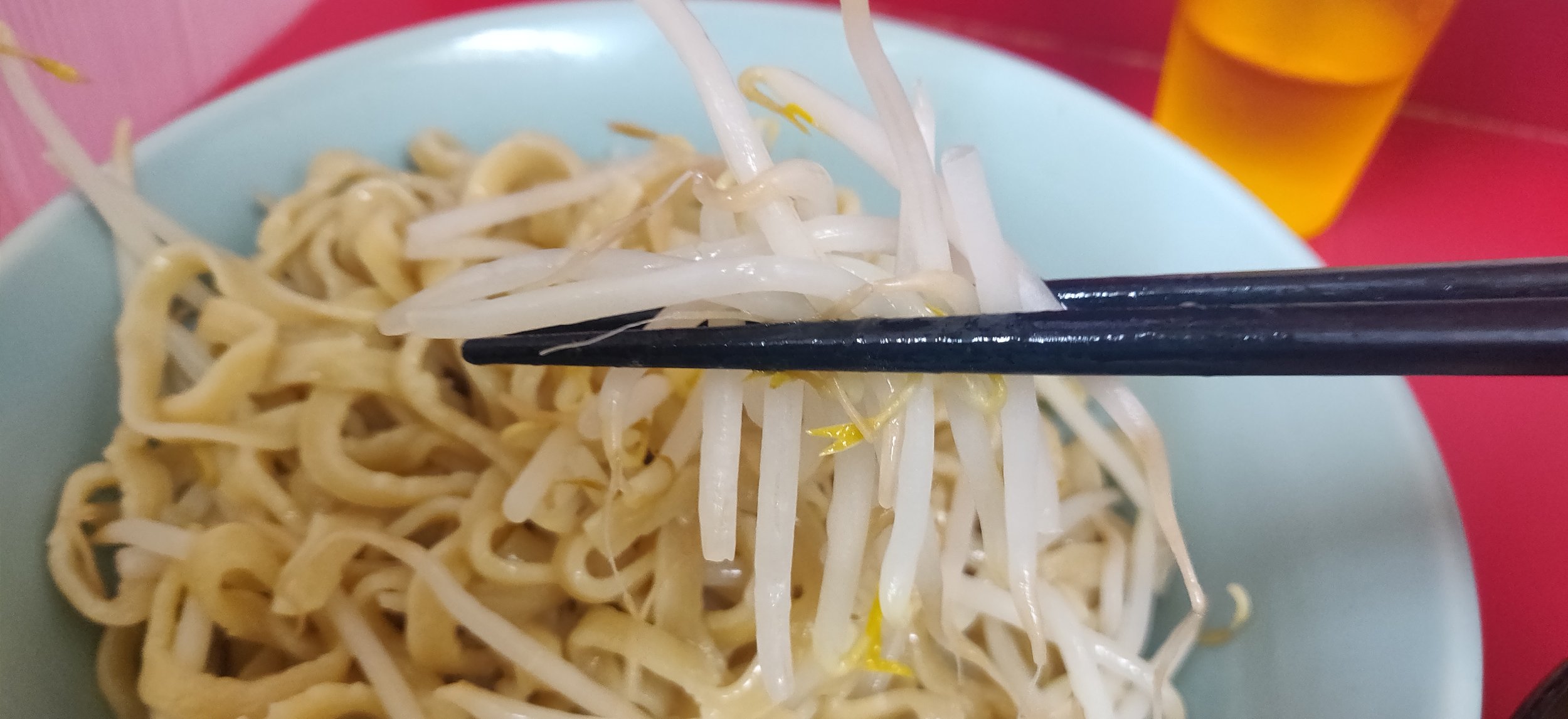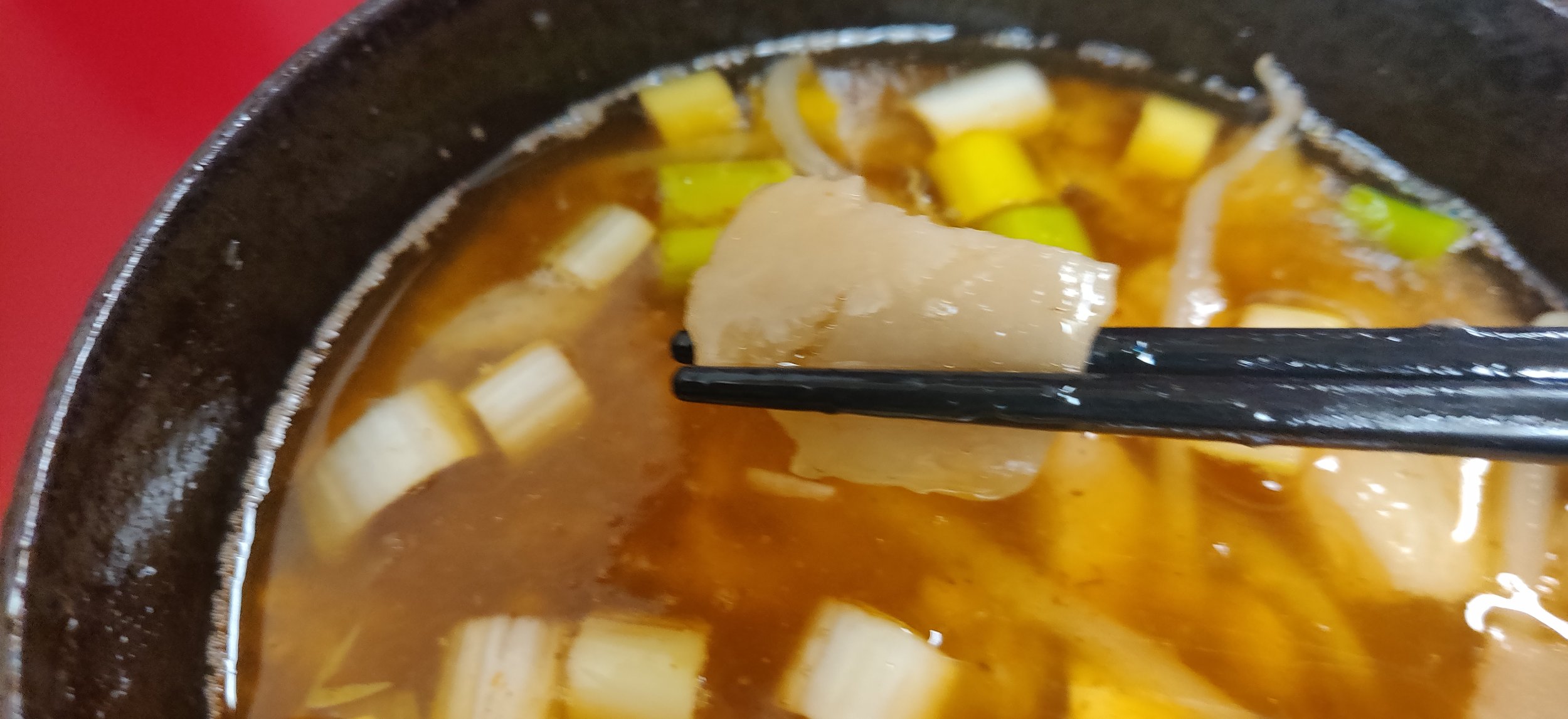Ramen Jiro Shinjuku Kabukicho (ラーメン二郎新宿歌舞伎町店): Tourist Jiro; Shinjuku, Tokyo
For many of you, Ramen Jiro may not be that appealing with the long lines and the complicated ordering system- it probably isn’t even on your radar. However, if for whatever reason I have some how peaked your interest, but your itinerary won’t allow you enough time to voyage out to one of the locations outside of central Tokyo, the Shinjuku Kabukicho shop may be the one for you. Situated in the center of Shinjuku, Kabukicho Jiro is also one of the lenient locations in terms of rules and ordering, so first timers should also mark this down as a potential one to hit. I will warn you though, this location is probably among the lowest rated and not necessarily the best this style has to offer, so if you want to just try it out for the sake of trying, it’s not a bad shout, but I do recommend making your way to one of the other well regarded shops. The Shinjuku Kabukicho location is open from Thursdays to Tuesdays with a day off on Wednesday and their hours are 11:30 am to 3:00 am so it’s pretty much the only location to grab a bowl late night after a round of drinks.
While they do tend to get a ton of foreign clientele, for whatever reason they never bothered to translate their ticket machine so I’ll do that here. First row starting with the left is the regular Ramen with extra pork chashu and double chashu besides it. On the far right is the Ajitama marinated egg, raw egg, and gyofun fish powder. On the second row is the Dai Ramen, or large ramen. Extra pork chashu and double pork chashu are next to it as well as Menma bamboo shoots and 5 slices of Nori dried seaweed to the far right. At the very bottom in blue is the Tsukemen in regular and large portion sizes. As I do with every Ramen Jiro review, I highly recommend getting a normal, Sho Ramen if it’s your first time. Portion sizes at any Ramen Jiro location is massive and they do frown upon, sometimes ban, customers who don’t finish their bowl when ordering the large size. If you’re weary of even ordering the small ramen, ask for “Men Sukuname” or less noodles, when the chef checks your order. If there’s a line out front, just get in the back and when it starts moving and you end up in front of the ticket machine, that’s when you make your selection. Inside, there is a small waiting area in the back and the master or one of the servers will check your order when there. Once a seat opens up, one of the employees will direct you to your seat by calling a number. Grab a renge spoon and a cup of water next to the ticket machine if you’d like, and grab your seat at the number designated to you.
Once seated and your ramen is ready, the master will ask “Ninniku iremasuka?” which translates to, “Would you like garlic?”. Now is the time to call out for your desired free toppings. Yasai (vegetables consisting of blanched cabbage and bean sprouts), Ninniku (pressed garlic), Abura (pork fat), and Karame (seasoning sauce) are all free of charge and when the chef asks what you’d like, you call out which toppings you would like and how much of each. If you say each topping, you will get an average amount of those toppings. If you want a little extra of a certain topping, you can say “Mashi” after which ever topping you want more of. “Mashi-Mashi” will be even more of said topping. So for instance, if you wanted no garlic, extra vegetables, and normal pork fat and seasoning sauce, you would say “Yasai mashi, abura, karame”. If you want extra of all the toppings you can say “Zen-Mashi”, or everything extra.
My order for the day was the regular Ramen with Ninniku, Abura Mashi, or extra garlic and pork back fat. The location is definitely one of the generous shops in terms of back fat so I honestly could have done with just a normal amount. Starting with the soup, I have to admit, it wasn’t particularly my favorite and it really stems from this broth. What I usually like for a Jiro is a really punchy pork broth and it doesn’t necessarily have to be emulsified to reach this level. Usually, for most Jiro shops, the stock is steeped and then water and pork bones are added continuously throughout the day to incorporate more flavors as the day goes on. However, with this location, since it is open continuously, all day long, I feel like the rate of bowls they serve far outpace the time it takes for the bones to steep, leading to a less than optimal flavor extraction in the broth. Given my thoughts, I would say that the best time to grab a bowl is probably right when it opens, but could vary from day to day. With that said, I think the soup is pretty solid, for what it is and how the shop is run. Given it’s location in central Shinjuku where foot traffic is probably the highest of the 41 shops, I thought they did a solid job of producing good quality ramen.
Noodles were moderately decent in my opinion. It does have the sort of reverse cut feel that many want in their first bowl of Jiro, but it does break apart quite quickly since the glutens haven’t properly formed during kneading and so it loses out on some of the satisfying slurpability other shops might offer. It does however soak up the soup quite nicely and the pairing isn’t bad so I did like the flavor profile of the two combined. As for the pork chashu, not necessarily my favorite and I think it was just a bit dry for me. In fact, it was so dry it didn’t soak up the soup either so it did taste a bit bland which was unfortunate. I think if I had a slightly fattier cut, it might have been passable, but again, this can vary by visit since the the pork chashu differs day to day.
So as you may have seen when I translated the ticket machine, this shop also serves a tsukemen to go along with the ramen option and I had the opportunity to try it so I’ll go ahead and review that as well. For as much flak I gave the ramen, the tsukemen is even worse and if you make a visit here, definitely opt for the ramen option. First off the soup was just way too light for it to properly function as a dipping broth and they try to compensate for that by adding extra karame seasoning and umami enhancers. As a result, the soup is super salty and I honestly recommend not drinking it straight. I think the gyofun fish powder adds some complexity to the soup, but overall it was probably my least favorite tsukemen option of the Jiros that serve them.
Noodles were probably my lease favorite part about the entire meal as it honestly just didn’t have the structural integrity to function as a tsukemen noodle. Since they are washed thoroughly after being cooked, it immediately gets broken down by the hand wash resulting in some incredibly short strands. It felt like I was dipping pasta with how short some of the strands were. I will however give it good marks for the chashu and the bits of leek which they added as topping. Pork chashu on this visit had a really nice ratio of meat to fat which was flavored by the intense flavors of the soup. It paired nicely with the noodles, almost like rice which I thought was decent. Leek gave the meal a texture contrast and the refreshing crunch helped cleanse my palette from the salty soup in between bites which was a lifesaver.
Overall, probably not my favorite Jiro location, but this is the better of the two in Shinjuku. If you’re parting or drinking late night in nearby Kabukicho or Memory Lane on the other side of the tracks, and you want to finish with a bowl of Jiro, this is definitely the best place to hit. If not, I recommend just carving a small part of your afternoon to hit one of the other Jiro locations, you can thank me later.

